Tanzania 2011 February Photo Safaris
Trip Report
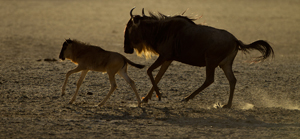
Read our Complete Trip Journals,
day-to-day accounts of either or both trips
Safari One
Safari Two
Read our Brochure for 2012
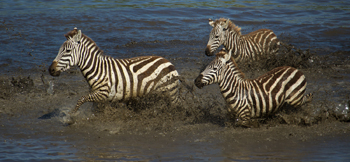
February is the peak of the gnu birthing season, when as many as 8,000 babies are born per day over a month long period. Doing so, the predators of the Serengeti ecosystem are literally overwhelmed, and while a few score are killed per day for food, the sheer number of available easy meals soon exceeds what the predators can eat, and the vast majority of the babies survive. We timed our two trips to coincide with the absolute peak of the birthing, both in the Serengeti and the Ngorongoro Crater.
If the herds arrived. If the rains came.


This great animal migration, the largest land mammal migration still on Earth, is tied to the rains. Gnus follow the rains, either attracted by the sound of thunder, the distant flash of lightning, or the smell of thunderstorms on the wind, and in a normal year the rains reach the lower Serengeti, the short grass plains rich in nutrients where gnus prefer to birth, in February, and continue on until April.
The rains didn’t come, at least in any quantity, and both the gnus and ourselves were teased by storms that loomed in the distance, or passed through quickly, but never long enough or with enough moisture to trigger new growth amongst the grasses. Since early January, the gnus had entered the southern Serengeti three times, tempted by the promise of rain, before moving out again.
While seeing the migration, the lines of streaming animals filing single file across the rolling or pancake-flat grasslands, or the masses of animals scattered about in every direction to the horizon, is awe-inspiring, even more magical is how it suddenly appears. One day, at the start of a game drive, the plains around you may be barren, but twelve hours later, or only six, when returning to camp, these same empty plains may be crammed full of gnus, as if they had sprouted from the soil. The herds are not moving; they are simply grazing, and one has to wonder if they’ve been at this pace all morning how, indeed, could the plains now be filled with game?
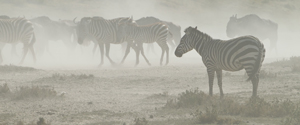
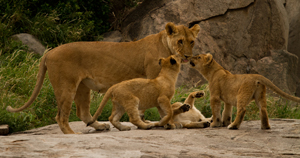
The herds did arrive, but not in the massive numbers we normally expect, and instead of seeing thousands of gnu babies we saw, in total, probably less than a thousand. Somewhere in the Serengeti we presume, the herds had gathered, dropping calves in less than ideal habitat as the dry season dragged on.
That said, we did see gnus, and both trips had a taste of the migration. But more importantly, a lack of easy gnu calf meals meant that the normally sated predators were far more active, and we had an incredible year of shooting. Both groups saw the very elusive caracal, a 40 pound, golden-furred cat with long black ear tufts, a cat that Mary and I have seen less than a dozen times. Both groups saw five cat species – the lynx-like caracal, the spotted serval cat, over a dozen cheetahs for each group, six to eight leopards, and well over 100 lions. Our second group even had the last cat we hoped to see, the house cat-sized African wild cat, as it moved across the grasses one dawn on the Ndutu plains.
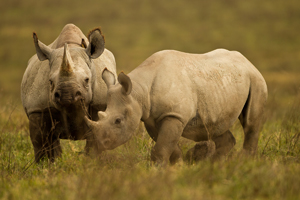 Each group did well with the endangered black rhinoceros, with bull elephants and elephant families at play, and with over 100 species of birds photographed each trip. As I write this now, on the evening of our last day in camp in the Serengeti, with a stiff breeze at my back and towering cumulous clouds heralding a post-sunset show of flashing lightning, a white-browed coucal, the rain bird, warbles its ascending and descending call, and I can only wish I had another two weeks. The month was too short, and while we visited all of our favorite locations in the lower Serengeti, the beautiful sculpted Gol Kopjes, where boulder islands dot the grasslands, the dusty flat lake beds of Ndutu, our goal for finding bat-eared foxes, flamingos, and more lions, the verdant acacia-lined river corridors of Seronera, where leopards hunt the brush for reedbuck, I still feel that we missed so much, for every day is different.
Each group did well with the endangered black rhinoceros, with bull elephants and elephant families at play, and with over 100 species of birds photographed each trip. As I write this now, on the evening of our last day in camp in the Serengeti, with a stiff breeze at my back and towering cumulous clouds heralding a post-sunset show of flashing lightning, a white-browed coucal, the rain bird, warbles its ascending and descending call, and I can only wish I had another two weeks. The month was too short, and while we visited all of our favorite locations in the lower Serengeti, the beautiful sculpted Gol Kopjes, where boulder islands dot the grasslands, the dusty flat lake beds of Ndutu, our goal for finding bat-eared foxes, flamingos, and more lions, the verdant acacia-lined river corridors of Seronera, where leopards hunt the brush for reedbuck, I still feel that we missed so much, for every day is different.
That said, our luck was simply incredible. Elephants and lions silhouetted on the kopjes at dawn, a lion pride in afternoon light atop a kopje, where cubs harassed a tolerant black-maned male, a leopard tackling a reedbuck just out of sight before us … each sighting was precious, but only whetted our appetite for more. This short portfolio only hints at the sights and experiences of the Serengeti, and if you’d like a more thorough, day-to-day account, please continue by reading our trip reports, Trip One or Trip Two, where more images and a detailed account of the safari is given.

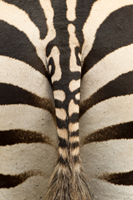
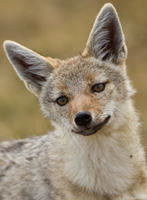
As I write this, we’re hoping to fit in one Serengeti/Ngorongoro Photo Safari in February of 2012, so if you are interested, please contact our office immediately. The Serengeti is magical. It is a harder shoot than what we do in Kenya, with longer hours required in the field, and far more driving as we visit the various locations in the lower Serengeti, but when we find things, which we do, daily, the sightings are, to be redundant, simply magical. The vastness, the sweep of big sky and endless grasslands, stretching to the distant volcanic peaks rim of the eastern horizon, the sense of wilderness and of truly being in a very special place makes the Serengeti unforgettable, and for many of our participants this trip has become an addiction.
We can’t wait to return.
Tanzania 2011 February Photo Safaris
Trip Report

Read our Complete Trip Journals,
day-to-day accounts of either or both trips
Safari One
Safari Two
Read our Brochure for 2012

February is the peak of the gnu birthing season, when as many as 8,000 babies are born per day over a month long period. Doing so, the predators of the Serengeti ecosystem are literally overwhelmed, and while a few score are killed per day for food, the sheer number of available easy meals soon exceeds what the predators can eat, and the vast majority of the babies survive. We timed our two trips to coincide with the absolute peak of the birthing, both in the Serengeti and the Ngorongoro Crater.
If the herds arrived. If the rains came.


This great animal migration, the largest land mammal migration still on Earth, is tied to the rains. Gnus follow the rains, either attracted by the sound of thunder, the distant flash of lightning, or the smell of thunderstorms on the wind, and in a normal year the rains reach the lower Serengeti, the short grass plains rich in nutrients where gnus prefer to birth, in February, and continue on until April.
The rains didn’t come, at least in any quantity, and both the gnus and ourselves were teased by storms that loomed in the distance, or passed through quickly, but never long enough or with enough moisture to trigger new growth amongst the grasses. Since early January, the gnus had entered the southern Serengeti three times, tempted by the promise of rain, before moving out again.
While seeing the migration, the lines of streaming animals filing single file across the rolling or pancake-flat grasslands, or the masses of animals scattered about in every direction to the horizon, is awe-inspiring, even more magical is how it suddenly appears. One day, at the start of a game drive, the plains around you may be barren, but twelve hours later, or only six, when returning to camp, these same empty plains may be crammed full of gnus, as if they had sprouted from the soil. The herds are not moving; they are simply grazing, and one has to wonder if they’ve been at this pace all morning how, indeed, could the plains now be filled with game?


The herds did arrive, but not in the massive numbers we normally expect, and instead of seeing thousands of gnu babies we saw, in total, probably less than a thousand. Somewhere in the Serengeti we presume, the herds had gathered, dropping calves in less than ideal habitat as the dry season dragged on.
That said, we did see gnus, and both trips had a taste of the migration. But more importantly, a lack of easy gnu calf meals meant that the normally sated predators were far more active, and we had an incredible year of shooting. Both groups saw the very elusive caracal, a 40 pound, golden-furred cat with long black ear tufts, a cat that Mary and I have seen less than a dozen times. Both groups saw five cat species – the lynx-like caracal, the spotted serval cat, over a dozen cheetahs for each group, six to eight leopards, and well over 100 lions. Our second group even had the last cat we hoped to see, the house cat-sized African wild cat, as it moved across the grasses one dawn on the Ndutu plains.
 Each group did well with the endangered black rhinoceros, with bull elephants and elephant families at play, and with over 100 species of birds photographed each trip. As I write this now, on the evening of our last day in camp in the Serengeti, with a stiff breeze at my back and towering cumulous clouds heralding a post-sunset show of flashing lightning, a white-browed coucal, the rain bird, warbles its ascending and descending call, and I can only wish I had another two weeks. The month was too short, and while we visited all of our favorite locations in the lower Serengeti, the beautiful sculpted Gol Kopjes, where boulder islands dot the grasslands, the dusty flat lake beds of Ndutu, our goal for finding bat-eared foxes, flamingos, and more lions, the verdant acacia-lined river corridors of Seronera, where leopards hunt the brush for reedbuck, I still feel that we missed so much, for every day is different.
Each group did well with the endangered black rhinoceros, with bull elephants and elephant families at play, and with over 100 species of birds photographed each trip. As I write this now, on the evening of our last day in camp in the Serengeti, with a stiff breeze at my back and towering cumulous clouds heralding a post-sunset show of flashing lightning, a white-browed coucal, the rain bird, warbles its ascending and descending call, and I can only wish I had another two weeks. The month was too short, and while we visited all of our favorite locations in the lower Serengeti, the beautiful sculpted Gol Kopjes, where boulder islands dot the grasslands, the dusty flat lake beds of Ndutu, our goal for finding bat-eared foxes, flamingos, and more lions, the verdant acacia-lined river corridors of Seronera, where leopards hunt the brush for reedbuck, I still feel that we missed so much, for every day is different.
That said, our luck was simply incredible. Elephants and lions silhouetted on the kopjes at dawn, a lion pride in afternoon light atop a kopje, where cubs harassed a tolerant black-maned male, a leopard tackling a reedbuck just out of sight before us … each sighting was precious, but only whetted our appetite for more. This short portfolio only hints at the sights and experiences of the Serengeti, and if you’d like a more thorough, day-to-day account, please continue by reading our trip reports, Trip One or Trip Two, where more images and a detailed account of the safari is given.



As I write this, we’re hoping to fit in one Serengeti/Ngorongoro Photo Safari in February of 2012, so if you are interested, please contact our office immediately. The Serengeti is magical. It is a harder shoot than what we do in Kenya, with longer hours required in the field, and far more driving as we visit the various locations in the lower Serengeti, but when we find things, which we do, daily, the sightings are, to be redundant, simply magical. The vastness, the sweep of big sky and endless grasslands, stretching to the distant volcanic peaks rim of the eastern horizon, the sense of wilderness and of truly being in a very special place makes the Serengeti unforgettable, and for many of our participants this trip has become an addiction.
We can’t wait to return.
Tanzania 2011 February Photo Safaris
Trip Report

Read our Complete Trip Journals,
day-to-day accounts of either or both trips
Safari One
Safari Two
Read our Brochure for 2012

February is the peak of the gnu birthing season, when as many as 8,000 babies are born per day over a month long period. Doing so, the predators of the Serengeti ecosystem are literally overwhelmed, and while a few score are killed per day for food, the sheer number of available easy meals soon exceeds what the predators can eat, and the vast majority of the babies survive. We timed our two trips to coincide with the absolute peak of the birthing, both in the Serengeti and the Ngorongoro Crater.
If the herds arrived. If the rains came.


This great animal migration, the largest land mammal migration still on Earth, is tied to the rains. Gnus follow the rains, either attracted by the sound of thunder, the distant flash of lightning, or the smell of thunderstorms on the wind, and in a normal year the rains reach the lower Serengeti, the short grass plains rich in nutrients where gnus prefer to birth, in February, and continue on until April.
The rains didn’t come, at least in any quantity, and both the gnus and ourselves were teased by storms that loomed in the distance, or passed through quickly, but never long enough or with enough moisture to trigger new growth amongst the grasses. Since early January, the gnus had entered the southern Serengeti three times, tempted by the promise of rain, before moving out again.
While seeing the migration, the lines of streaming animals filing single file across the rolling or pancake-flat grasslands, or the masses of animals scattered about in every direction to the horizon, is awe-inspiring, even more magical is how it suddenly appears. One day, at the start of a game drive, the plains around you may be barren, but twelve hours later, or only six, when returning to camp, these same empty plains may be crammed full of gnus, as if they had sprouted from the soil. The herds are not moving; they are simply grazing, and one has to wonder if they’ve been at this pace all morning how, indeed, could the plains now be filled with game?


The herds did arrive, but not in the massive numbers we normally expect, and instead of seeing thousands of gnu babies we saw, in total, probably less than a thousand. Somewhere in the Serengeti we presume, the herds had gathered, dropping calves in less than ideal habitat as the dry season dragged on.
That said, we did see gnus, and both trips had a taste of the migration. But more importantly, a lack of easy gnu calf meals meant that the normally sated predators were far more active, and we had an incredible year of shooting. Both groups saw the very elusive caracal, a 40 pound, golden-furred cat with long black ear tufts, a cat that Mary and I have seen less than a dozen times. Both groups saw five cat species – the lynx-like caracal, the spotted serval cat, over a dozen cheetahs for each group, six to eight leopards, and well over 100 lions. Our second group even had the last cat we hoped to see, the house cat-sized African wild cat, as it moved across the grasses one dawn on the Ndutu plains.
 Each group did well with the endangered black rhinoceros, with bull elephants and elephant families at play, and with over 100 species of birds photographed each trip. As I write this now, on the evening of our last day in camp in the Serengeti, with a stiff breeze at my back and towering cumulous clouds heralding a post-sunset show of flashing lightning, a white-browed coucal, the rain bird, warbles its ascending and descending call, and I can only wish I had another two weeks. The month was too short, and while we visited all of our favorite locations in the lower Serengeti, the beautiful sculpted Gol Kopjes, where boulder islands dot the grasslands, the dusty flat lake beds of Ndutu, our goal for finding bat-eared foxes, flamingos, and more lions, the verdant acacia-lined river corridors of Seronera, where leopards hunt the brush for reedbuck, I still feel that we missed so much, for every day is different.
Each group did well with the endangered black rhinoceros, with bull elephants and elephant families at play, and with over 100 species of birds photographed each trip. As I write this now, on the evening of our last day in camp in the Serengeti, with a stiff breeze at my back and towering cumulous clouds heralding a post-sunset show of flashing lightning, a white-browed coucal, the rain bird, warbles its ascending and descending call, and I can only wish I had another two weeks. The month was too short, and while we visited all of our favorite locations in the lower Serengeti, the beautiful sculpted Gol Kopjes, where boulder islands dot the grasslands, the dusty flat lake beds of Ndutu, our goal for finding bat-eared foxes, flamingos, and more lions, the verdant acacia-lined river corridors of Seronera, where leopards hunt the brush for reedbuck, I still feel that we missed so much, for every day is different.
That said, our luck was simply incredible. Elephants and lions silhouetted on the kopjes at dawn, a lion pride in afternoon light atop a kopje, where cubs harassed a tolerant black-maned male, a leopard tackling a reedbuck just out of sight before us … each sighting was precious, but only whetted our appetite for more. This short portfolio only hints at the sights and experiences of the Serengeti, and if you’d like a more thorough, day-to-day account, please continue by reading our trip reports, Trip One or Trip Two, where more images and a detailed account of the safari is given.



As I write this, we’re hoping to fit in one Serengeti/Ngorongoro Photo Safari in February of 2012, so if you are interested, please contact our office immediately. The Serengeti is magical. It is a harder shoot than what we do in Kenya, with longer hours required in the field, and far more driving as we visit the various locations in the lower Serengeti, but when we find things, which we do, daily, the sightings are, to be redundant, simply magical. The vastness, the sweep of big sky and endless grasslands, stretching to the distant volcanic peaks rim of the eastern horizon, the sense of wilderness and of truly being in a very special place makes the Serengeti unforgettable, and for many of our participants this trip has become an addiction.
We can’t wait to return.
Tanzania 2011 February Photo Safaris
Trip Report

Read our Complete Trip Journals,
day-to-day accounts of either or both trips
Safari One
Safari Two
Read our Brochure for 2012

February is the peak of the gnu birthing season, when as many as 8,000 babies are born per day over a month long period. Doing so, the predators of the Serengeti ecosystem are literally overwhelmed, and while a few score are killed per day for food, the sheer number of available easy meals soon exceeds what the predators can eat, and the vast majority of the babies survive. We timed our two trips to coincide with the absolute peak of the birthing, both in the Serengeti and the Ngorongoro Crater.
If the herds arrived. If the rains came.


This great animal migration, the largest land mammal migration still on Earth, is tied to the rains. Gnus follow the rains, either attracted by the sound of thunder, the distant flash of lightning, or the smell of thunderstorms on the wind, and in a normal year the rains reach the lower Serengeti, the short grass plains rich in nutrients where gnus prefer to birth, in February, and continue on until April.
The rains didn’t come, at least in any quantity, and both the gnus and ourselves were teased by storms that loomed in the distance, or passed through quickly, but never long enough or with enough moisture to trigger new growth amongst the grasses. Since early January, the gnus had entered the southern Serengeti three times, tempted by the promise of rain, before moving out again.
While seeing the migration, the lines of streaming animals filing single file across the rolling or pancake-flat grasslands, or the masses of animals scattered about in every direction to the horizon, is awe-inspiring, even more magical is how it suddenly appears. One day, at the start of a game drive, the plains around you may be barren, but twelve hours later, or only six, when returning to camp, these same empty plains may be crammed full of gnus, as if they had sprouted from the soil. The herds are not moving; they are simply grazing, and one has to wonder if they’ve been at this pace all morning how, indeed, could the plains now be filled with game?


The herds did arrive, but not in the massive numbers we normally expect, and instead of seeing thousands of gnu babies we saw, in total, probably less than a thousand. Somewhere in the Serengeti we presume, the herds had gathered, dropping calves in less than ideal habitat as the dry season dragged on.
That said, we did see gnus, and both trips had a taste of the migration. But more importantly, a lack of easy gnu calf meals meant that the normally sated predators were far more active, and we had an incredible year of shooting. Both groups saw the very elusive caracal, a 40 pound, golden-furred cat with long black ear tufts, a cat that Mary and I have seen less than a dozen times. Both groups saw five cat species – the lynx-like caracal, the spotted serval cat, over a dozen cheetahs for each group, six to eight leopards, and well over 100 lions. Our second group even had the last cat we hoped to see, the house cat-sized African wild cat, as it moved across the grasses one dawn on the Ndutu plains.
 Each group did well with the endangered black rhinoceros, with bull elephants and elephant families at play, and with over 100 species of birds photographed each trip. As I write this now, on the evening of our last day in camp in the Serengeti, with a stiff breeze at my back and towering cumulous clouds heralding a post-sunset show of flashing lightning, a white-browed coucal, the rain bird, warbles its ascending and descending call, and I can only wish I had another two weeks. The month was too short, and while we visited all of our favorite locations in the lower Serengeti, the beautiful sculpted Gol Kopjes, where boulder islands dot the grasslands, the dusty flat lake beds of Ndutu, our goal for finding bat-eared foxes, flamingos, and more lions, the verdant acacia-lined river corridors of Seronera, where leopards hunt the brush for reedbuck, I still feel that we missed so much, for every day is different.
Each group did well with the endangered black rhinoceros, with bull elephants and elephant families at play, and with over 100 species of birds photographed each trip. As I write this now, on the evening of our last day in camp in the Serengeti, with a stiff breeze at my back and towering cumulous clouds heralding a post-sunset show of flashing lightning, a white-browed coucal, the rain bird, warbles its ascending and descending call, and I can only wish I had another two weeks. The month was too short, and while we visited all of our favorite locations in the lower Serengeti, the beautiful sculpted Gol Kopjes, where boulder islands dot the grasslands, the dusty flat lake beds of Ndutu, our goal for finding bat-eared foxes, flamingos, and more lions, the verdant acacia-lined river corridors of Seronera, where leopards hunt the brush for reedbuck, I still feel that we missed so much, for every day is different.
That said, our luck was simply incredible. Elephants and lions silhouetted on the kopjes at dawn, a lion pride in afternoon light atop a kopje, where cubs harassed a tolerant black-maned male, a leopard tackling a reedbuck just out of sight before us … each sighting was precious, but only whetted our appetite for more. This short portfolio only hints at the sights and experiences of the Serengeti, and if you’d like a more thorough, day-to-day account, please continue by reading our trip reports, Trip One or Trip Two, where more images and a detailed account of the safari is given.



As I write this, we’re hoping to fit in one Serengeti/Ngorongoro Photo Safari in February of 2012, so if you are interested, please contact our office immediately. The Serengeti is magical. It is a harder shoot than what we do in Kenya, with longer hours required in the field, and far more driving as we visit the various locations in the lower Serengeti, but when we find things, which we do, daily, the sightings are, to be redundant, simply magical. The vastness, the sweep of big sky and endless grasslands, stretching to the distant volcanic peaks rim of the eastern horizon, the sense of wilderness and of truly being in a very special place makes the Serengeti unforgettable, and for many of our participants this trip has become an addiction.
We can’t wait to return.


